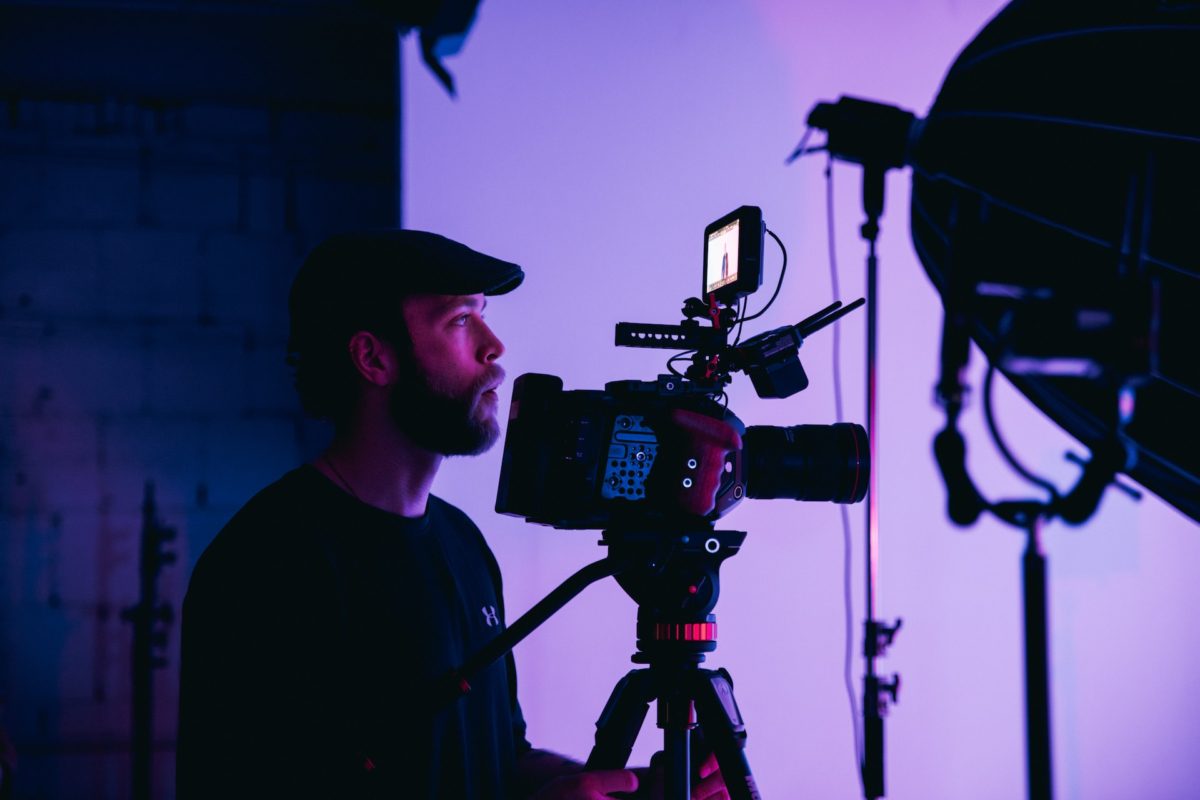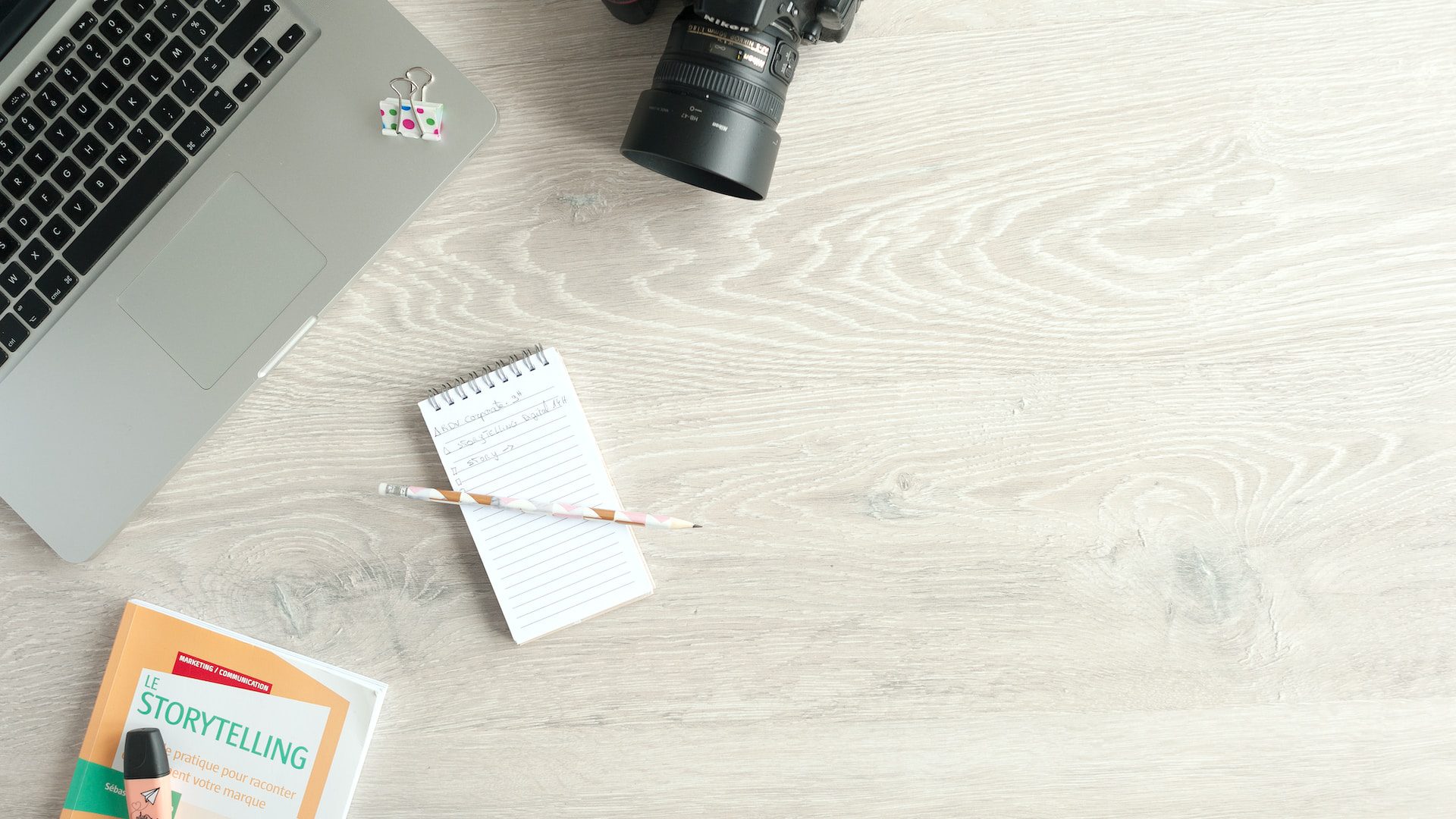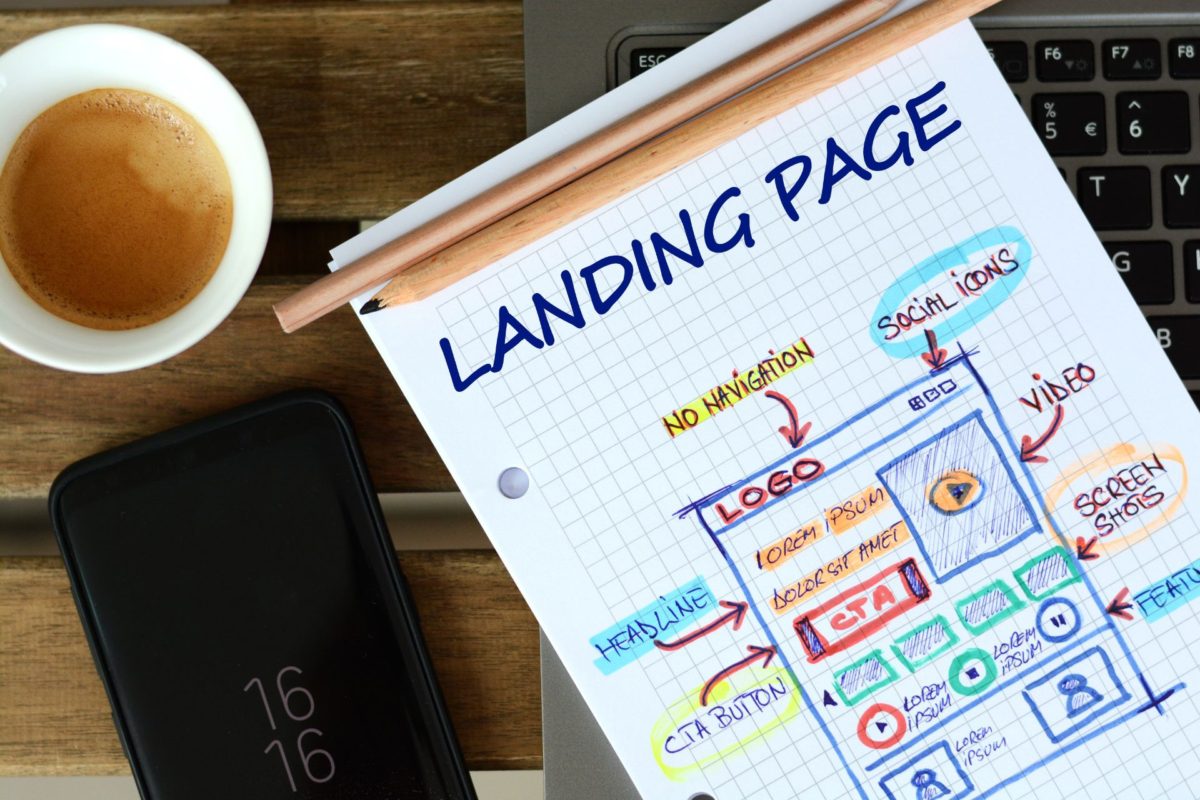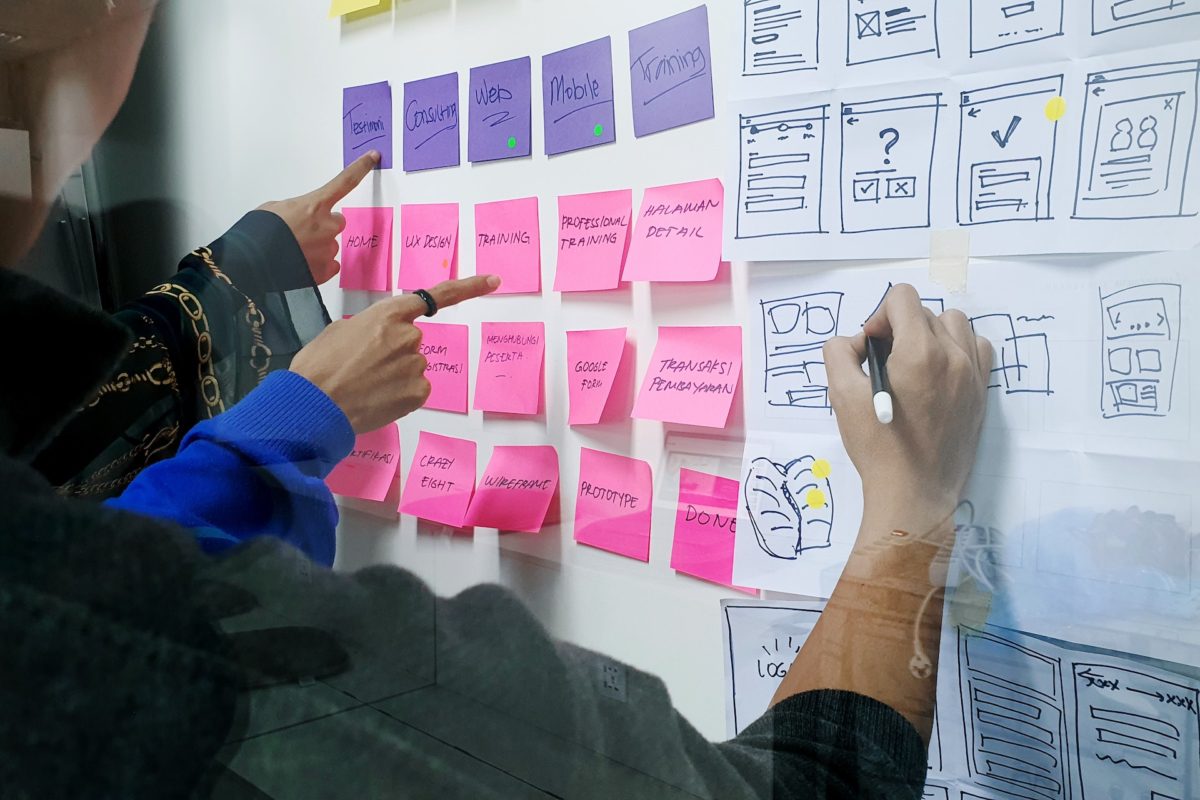This guide breaks down how to create a landing page that converts, guiding you through the process of selecting the right tools, crafting compelling content, designing with impact, and testing to ensure peak conversion rates.
In today’s digital world, the power of visual storytelling in web design cannot be overstated. As humans, we are inherently drawn to stories and visuals, making this combination a potent force in capturing our attention. In this blog post, we will explore the essence and science behind visual storytelling, key components for creating effective visual narratives, best practices, and tools to enhance your web design skills. Get ready to embark on a journey of discovery that will elevate your content marketing strategy and engage your audience like never before.
Key Takeaways
- Visual Storytelling is an essential part of web design and content marketing, utilizing visuals to engage users and share a brand’s message.
- Creating effective visual stories requires a robust narrative, engaging visuals tailored to the target audience & consistency with your brand identity.
- Best practices include authenticity, simplicity & adaptability, plus tools like Canva or Adobe Creative Cloud for creating captivating visuals!
The Essence of Visual Storytelling

Utilizing images, videos, and other visual elements to tell a story forms the art of visual storytelling, a significant component of web design and content marketing strategy. From ancient cave paintings to contemporary memes, visual storytelling has been an integral part of human communication throughout history. In the digital age, marketers have harnessed the power of visual storytelling to engage users, share their brand’s message, and create a connection with their audience.
The effectiveness of visual storytelling lies in our ability to process images faster than text, making it a powerful tool for capturing and maintaining the viewer’s attention. Mastering basic storytelling techniques enables digital marketers to craft compelling stories through visual storytelling that resonate with their audience and create a ripple in the pop culture. From photography and illustration to video and animation, the possibilities for using visual storytelling in web design are endless.
The Science Behind Visual Storytelling

The effectiveness of visual storytelling springs from the human brain’s inclination towards visuals and our inherent love for stories. Studies have shown that the human brain can process visual information much faster than text, making visuals an essential tool for capturing the audience’s attention and conveying information efficiently. In fact, most people are visual learners, meaning they process and retain information better when it’s presented visually.
By combining the power of visuals with the universal appeal of stories, visual storytelling becomes an incredibly effective marketing strategy. Brands that successfully leverage this strategy can create an engaging and memorable experience for their audience, ultimately driving emotions and influencing behavior.
Therefore, if captivating your audience and leaving a lasting impression is your goal, visual storytelling works prove to be an effective approach.
Key Components of Effective Visual Stories in Web Design

Creating compelling visual stories in web design requires attention to three pivotal components: a robust narrative, engaging visuals, and a distinct message tailored for your target audience. A compelling narrative is the backbone of your visual story, guiding your audience from point A to point B while keeping them engaged throughout the journey.
The visuals you choose should support the narrative and evoke emotions, creating a sense of story arc or character arc that holds the viewer’s attention.
Lastly, having a clear and consistent message is crucial to ensure your story stays on track and resonates with your audience. By focusing on these key components, you can create visual stories that not only capture the audience’s attention but also leave a lasting impact, making your web design more engaging and effective.
Crafting Your Brand’s Visual Narrative

Crafting an engaging visual narrative for your brand involves defining your brand story, selecting an appropriate visual medium, and producing appealing, consistent visuals that bolster your narrative.
Let’s dive deeper into each of these steps and learn how to create a visual narrative that resonates with your audience and drives results.
Defining Your Brand’s Story
Defining your brand’s story starts with understanding its purpose, values, and unique selling points. This includes the brand’s mission, history, and the characteristics that set it apart from competitors. By identifying these elements, you can create a story that resonates with your target audience and helps them connect with your brand on a deeper level. Additionally, understanding the needs of your target audience is crucial to crafting a story that appeals to their preferences, interests, and motivations.
After defining your brand story, aligning it with your overarching marketing and business goals becomes a vital step. This means that the story should support your brand’s objectives, whether it’s driving sales, increasing brand awareness, or building customer loyalty. By creating a story that aligns with your brand’s goals, you can create a strong foundation for your visual narrative and ensure that your visual storytelling efforts are both engaging and effective.
Choosing the Right Visual Medium
Choosing an appropriate form of visual media for your story constitutes a pivotal step in shaping your brand’s visual narrative. The medium you choose should be based on the message you want to convey and the preferences of your target audience. Options for visual media include:
- Photos
- Illustrations
- Videos
- Animations
Each medium has its own unique advantages and characteristics.
For example, custom illustrations can be designed to match your brand’s colors and visual style, making them a more personalized and unique alternative to stock photography. Meanwhile, videos can be a powerful storytelling tool, capable of conveying complex ideas and emotions in a short amount of time. By considering your brand’s story and target audience, you can choose the visual medium that best supports your narrative and engages your viewers.
Creating Engaging and Consistent Visuals

Creating appealing, consistent visuals for your brand’s story necessitates a harmonious balance between aesthetics and functionality. While eye-catching visuals can capture your audience’s attention, they must also support your narrative and be easily understood by your viewers. This means that the visuals should complement your story, helping to convey the message while also maintaining a consistent and cohesive look throughout your content.
One way to achieve this balance is by adhering to your brand’s visual identity, including its color palette, typography, and graphic style. This consistency helps to build trust, recognition, and an overall sense of professionalism, making the storytelling experience more engaging for users.
Additionally, focusing on simplicity and clarity in your visuals can ensure that your message is easily understood and your story remains on track. By creating visuals that are both engaging and consistent, you can effectively support your brand’s visual narrative and make a lasting impression on your audience.
Best Practices for Visual Storytelling in Web Design

Following certain best practices in web design is vital for the success of your visual storytelling efforts. These practices include authenticity and honesty, simplicity and clarity, and adaptability and responsiveness.
Let’s take a closer look at each of these best practices and learn how to implement them in your visual storytelling.
Authenticity and Honesty
Effective visual storytelling greatly hinges on authenticity and honesty. By using real-life examples, genuine emotions, and true stories, you can create a connection with your audience that feels genuine and resonates with them on a deeper level. This authenticity helps to build trust and credibility, as well as express your brand’s identity and values in an honest way. A good story can make all the difference in achieving these goals.
To bring real emotions to your visual stories, you can:
- Capture genuine moments and experiences
- Choose your words carefully
- Tap into our natural instincts
- Use colors, lighting, and other visuals that evoke emotions
By staying authentic and honest in your visual storytelling, you can create a more engaging and memorable experience for your audience.
Simplicity and Clarity
Maintaining simplicity and clarity in visual storytelling entails emphasizing on the essential elements of your story while sidestepping unneeded distractions. By keeping your visuals simple and clear, you can ensure that your message is easily understood by your audience and that your story remains engaging and captivating. This can be achieved through clean and minimalistic design, effective typography, and adherence to visual design best practices.
One great example of simplicity and clarity in visual storytelling is the use of infographics to convey complex information in a visually appealing and easy-to-understand format. By focusing on the core message and eliminating any extraneous details, you can create visuals that effectively communicate your story and resonate with your audience.
Adaptability and Responsiveness
In visual storytelling, adaptability and responsiveness are about designing visuals that maintain their clarity and readability across a multitude of devices and platforms. In today’s digital landscape, users access content on a wide range of devices, including:
- smartphones
- tablets
- laptops
- desktop computers
To ensure a seamless user experience, your visual storytelling should adapt to these different devices and platforms without compromising the quality and integrity of your content, so it doesn’t become the same story of inconsistency across platforms.
By focusing on responsive design, you can create visual stories that:
- Look great and function seamlessly across different devices and screen sizes
- Enhance the user experience
- Boost the reach and accessibility of your content
- Make your storytelling available to a broader audience across different platforms.
Tools and Resources for Visual Storytelling in Web Design

A variety of tools and resources are available to assist designers in creating compelling visuals and optimizing them for the web, enhancing their visual storytelling efforts. Some of the best online tools for web design include:
- Canva
- Visme
- Venngage
- Esri ArcGIS StoryMaps
- Mapbox
- Shorthand
- Flourish
These tools can help you design captivating visuals, optimize them for various devices and platforms, and track their performance, ensuring the success of your visual storytelling efforts.
In addition to these design tools, there are also resources available for compressing media without compromising quality, such as Adobe Creative Cloud, TinyPNG, and Compressor.io. With the right tools and resources at your disposal, you can create engaging visual stories that resonate with your audience and drive results.
Common Mistakes to Avoid in Visual Storytelling in Web Design
While visual storytelling serves as a potent tool for user engagement and message delivery, avoiding certain common mistakes is crucial to guarantee the efficacy of your endeavors. One common mistake is focusing too much on aesthetics at the expense of functionality. While eye-catching visuals can be engaging, they must also support the narrative and be easily understood by the audience.
Another mistake is using generic or irrelevant visuals that fail to connect with your target audience. These visuals can weaken your message and make your story less engaging.
Lastly, it’s important to ensure that your visuals are adaptable and responsive to different devices and platforms, as failing to do so can result in a poor user experience and limit the reach of your content. By avoiding these common mistakes, you can create visual stories that are both engaging and effective in capturing your audience’s attention.
Summary
Visual storytelling is an essential component of web design and content marketing, using the power of visuals and narratives to engage users and drive results. By understanding the essence and science behind visual storytelling, focusing on the key components of effective visual stories, and implementing best practices, you can create captivating visual narratives that resonate with your audience and support your brand’s goals. Elevate your web design further by taking advantage of Nopio’s specialized web design services, tailored to seamlessly integrate compelling visual storytelling into your online presence. Our expert team combines creative flair with technical expertise to ensure your website not only looks stunning but also effectively communicates your brand story, making it an engaging experience for your specific buyer persona. Whether you’re a seasoned designer or just starting out, embracing the power of visual storytelling can elevate your web design skills and help you create content that leaves a lasting impact on your audience.
Frequently Asked Questions
What is visual storytelling with example?
Visual Storytelling is the use of visuals such as images, infographics, videos and music to tell an engaging story. It can be used to create powerful connections and make information easier to digest.
What are the 7 elements of visual storytelling?
Visual storytelling relies on characters, setting, composition and framing, emotion, sequencing and transitions, visual cues, and typography and text for success. With these elements in place, stories can be captivating and engaging.
Why is it important to have a clear message in visual storytelling?
A clear message is essential in visual storytelling to keep the narrative on track and ensure your story stays relevant. It helps avoid distractions and keeps your story in the pop culture spotlight.
How can I make my visual story more straightforward and clear?
Make your visual story more straightforward and clear by using a clean and minimalistic design, applying visual design best practices, and utilizing effective typography. Communicate in a conversational tone and focus on including a clear conclusion in the first sentence without any introduction or summary.
What tools are available for creating visual stories in web design?
For creating visual stories in web design, Canva, Visme, Venngage, Esri ArcGIS StoryMaps, Mapbox, Shorthand, and Flourish are great tools to consider.






